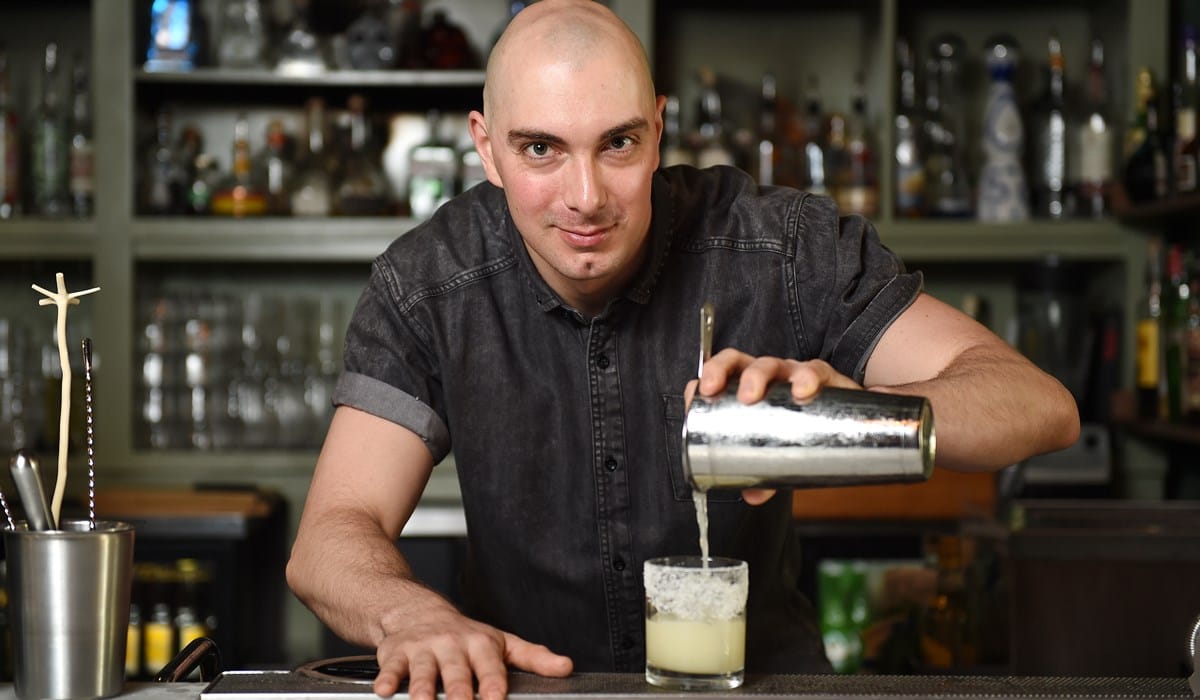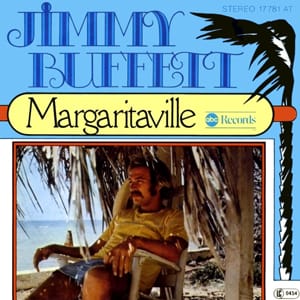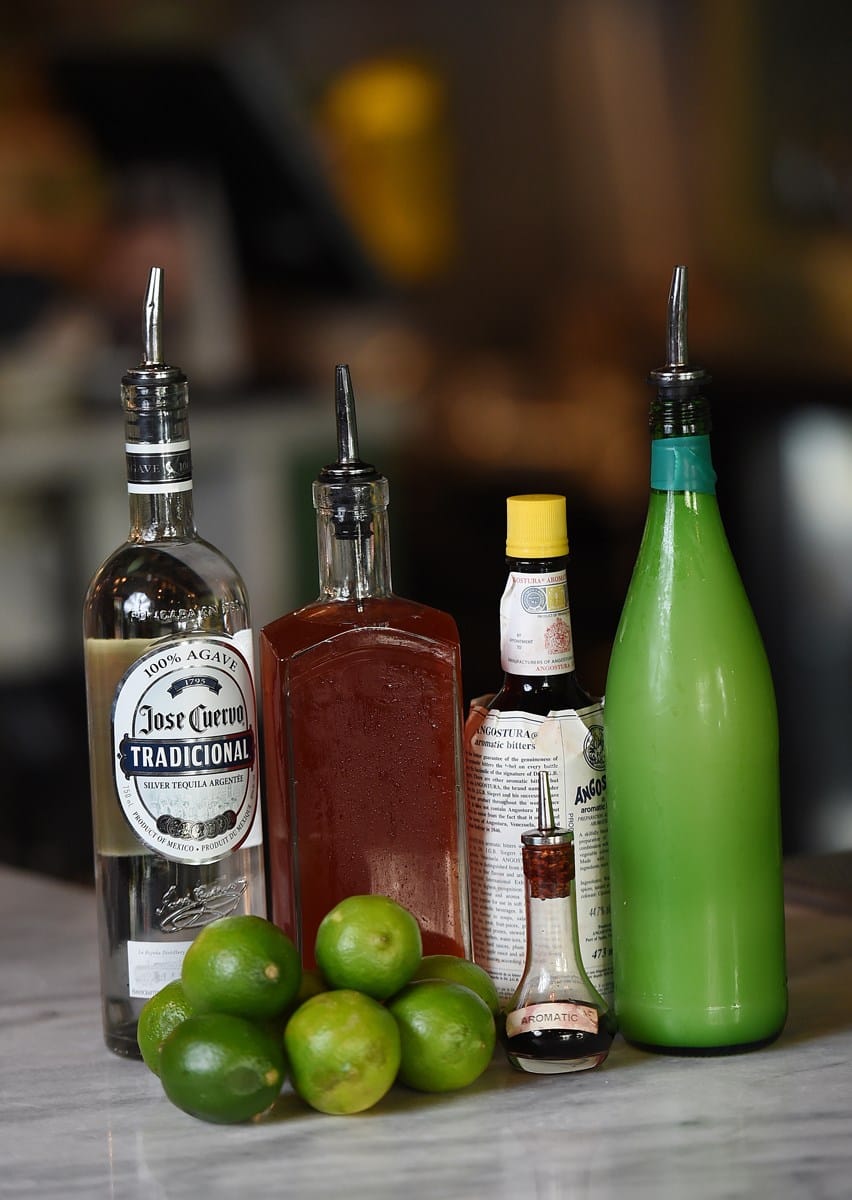Mastering this quintessential summer cocktail can be as difficult as tracking down its origins

It’s the taste of a perfect summer afternoon: that citrus bite, the peppery hit of tequila, the touch of salt like the spray of a random ocean wave.
We’re talking about the Margarita, of course; the quintessential summer cocktail that holds a mysterious past. When it comes to this particular dame’s history, no one really knows what the truth is.
“There are a bunch of stories and they all have to do with a woman named Margaret or Margarita or Rita,” says Ryley Zucca, beverage director of Vancouver’s La Mezcaleria restaurants.
According to the best known tale, a Tijuana bartender named Carlos “Danny” Herrera invented the drink in the 1930s for a glamorous Ziegfield showgirl named Marjorie King. She was apparently allergic to all spirits except tequila (uh-huh), so he took a traditional sour, replaced the gin with tequila, and a classic was born.
Other stories have a variety of bartenders in the 1940s inventing the cocktail for beautiful women named Margaret who happened to have a thing for tequila, including the actress Rita (born Margarita) Hayworth in Tijuana, socialite Margaret Sames in Acapulco and singer Peggy Lee — “Peggy” being short for Margaret — in Galveston, Texas.
Chances are, though, that none of these stories is true.
The one thing we know about the Margarita is that it’s not a Mexican cocktail at all. Instead, they will drink Palomas and Micheladas and anything you can mix with horchata.
Cocktail historian David Wondrich traces the Margarita back to a much older drink called the Daisy. Invented in the 1870s, it comprised a shot of liquor shaken with lemon juice and “orange cordial” — what we now consider a standard sour.
Sometime in the 1920s, it seems, a customer asked for a Gin Daisy at the Turf Bar in Tijuana. The bartender, Henry Madden, accidentally grabbed the wrong bottle, made the drink with tequila instead of gin and, completely by mistake, created the Margarita, which is Spanish for Daisy. To add credibility to this story, it was told to a reporter in 1936, by which time the drink had spread across Mexico.
Or had it?

“The one thing we know about the Margarita is that it’s not a Mexican cocktail at all,” says Zucca. “Instead, they will drink Palomas and Micheladas and anything you can mix with horchata [a creamy, ground-rice drink].”
In fact, Mexico has never had much of a cocktail culture. However and whenever it was created, the Margarita emerged from the borderlands. But that doesn’t make it any less delicious, provided, of course, that it’s made right.
“On the one hand, it’s hard to mess it up. But on the other, it’s hard to perfect. Its real brilliance is its simplicity,” Zucca says.
The formula for the classic Margarita is so easy you can even remember it after too many, well, Margaritas: two parts tequila, one part lime juice, one part Cointreau. Shake it up and serve it up in a cocktail glass or over ice in a salt-rimmed rocks glass.
The most important thing is to use a good quality, 100-per-cent blue agave tequila, not a cheap mixto. The second most important thing is to use fresh juice, not sour mix.
There are countless variations on the Margarita, including pineapple, ginger, blood orange and pomegranate, the latter of which goes into a little-known classic from the 1930s called the Mexican Firing Squad.

“The key to a delicious Mexican Firing Squad is good grenadine, not to be confused with mass-produced and cloyingly saccharine pre-bottled or on-the-gun swill,” says Zucca. “It’s bright and fresh, rich and deep, slightly sweet and perfectly tart.”
Then, of course, there’s the frozen Margarita, invented in the 1950s and popularized in the ’70s.
“I have no ill will toward a frozen Margarita,” Zucca says, before throwing some shade at this Daisy-come-lately. “Though what you will get is a less fresh, less bespoke Margarita.”
Though we may know little about the Margarita’s past, one thing about this cocktail is clear. As Zucca says, “When the weather is sunny, it goes down so fast.”
NO WAY, JOSE: Jose Cuervo’s take on the Margarita myth is that the drink was invented in 1938 by a bartender in honour of Mexican showgirl Rita de la Rosa. The tequila maker began running ads for the Margarita in 1945 featuring the slogan, “Margarita: It’s more than a girl’s name.”
—by Joanne Sasvari




